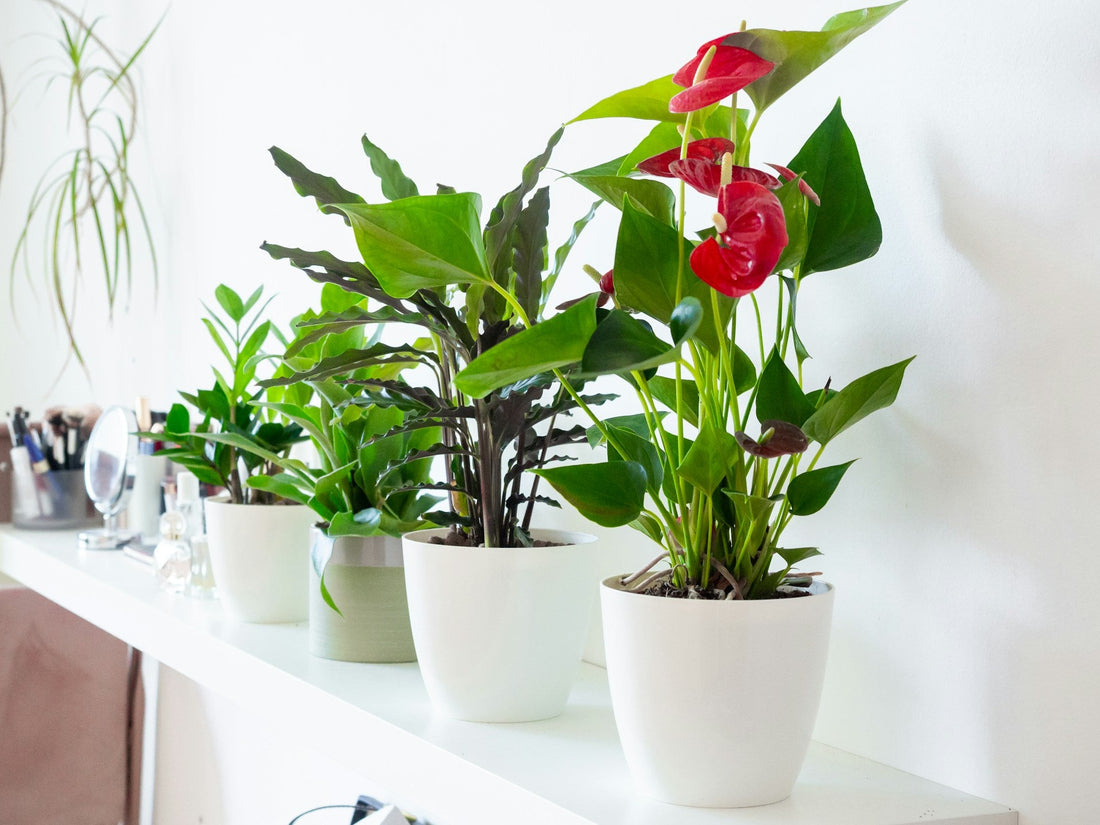
The Best Indoor Plants to Purify the Air in Your Home
Share
In today’s fast-paced world, many of us spend the majority of our time indoors—whether at home or in the office. While we may think of the air inside our homes as clean, research shows that indoor air can often be more polluted than outdoor air. Everyday household products, synthetic materials, and even furniture can release toxins such as formaldehyde, benzene, and trichloroethylene into the air we breathe.
The good news? Nature has given us an elegant solution: indoor plants that purify the air. Not only do they add beauty, greenery, and a sense of calm to your space, but they also act as natural air filters, removing harmful toxins and improving oxygen levels.
If you’re ready to transform your home into a healthier and more refreshing sanctuary, here are some of the best indoor plants for air purification.
1. Snake Plant (Sansevieria)
Known as the “Mother-in-Law’s Tongue,” the snake plant is one of the easiest and most resilient houseplants. It thrives on neglect, requiring little water and tolerating low light conditions. This plant is particularly effective at filtering out formaldehyde and nitrogen oxides. What makes it special is its ability to release oxygen at night, making it an excellent choice for bedrooms.
2. Spider Plant (Chlorophytum comosum)
If you’re a beginner, the spider plant is practically foolproof. With its cascading leaves and small “baby” offshoots, it’s both attractive and easy to grow. Spider plants are great at removing carbon monoxide, xylene, and formaldehyde from the air. They also act as natural humidifiers, helping balance indoor moisture levels.
3. Peace Lily (Spathiphyllum)
The peace lily is not only elegant with its white blooms but also a powerful air purifier. It’s known for removing mold spores, benzene, and trichloroethylene from indoor spaces. Peace lilies prefer low to medium light, making them ideal for darker corners of your home. Just remember—they’re mildly toxic to pets, so place them out of reach of cats and dogs.
4. Aloe Vera
Most people know aloe vera for its soothing gel used on burns and skin irritations. But did you know it’s also an excellent air purifier? Aloe vera helps remove benzene and formaldehyde often found in household cleaners and paints. As a bonus, its plump, green leaves bring a refreshing desert vibe to your space.
5. Boston Fern (Nephrolepis exaltata)
If your home tends to be dry, the Boston fern is your best friend. This lush, feathery plant loves humidity and works wonders at restoring moisture in the air. It’s also a natural filter for pollutants like formaldehyde and xylene. Place it in a bathroom or kitchen where humidity levels are naturally higher.
6. Rubber Plant (Ficus elastica)
The rubber plant is a bold, statement-making indoor plant with large, glossy leaves. It’s one of the most effective at removing toxins like formaldehyde from indoor air. Plus, its striking appearance makes it perfect for modern, minimalist interiors.
7. Bamboo Palm (Chamaedorea seifrizii)
The bamboo palm not only looks tropical and lush but also ranks high on NASA’s list of best air-purifying plants. It filters out benzene, formaldehyde, and trichloroethylene, while also acting as a natural humidifier. It thrives in indirect light and can grow quite tall, adding a refreshing jungle-like vibe to your living space.
8. English Ivy (Hedera helix)
The English ivy is famous for reducing airborne mold and allergens. It’s an excellent choice if you suffer from allergies or asthma. This trailing plant looks beautiful in hanging baskets or as a cascading accent on shelves.
Tips for Maximizing the Benefits of Air-Purifying Plants
-
Group plants together: Having multiple plants in one space increases their collective air-cleaning power.
-
Keep leaves clean: Dust can block plants from absorbing pollutants effectively. Wipe leaves with a damp cloth every few weeks.
-
Choose the right spot: Place plants in areas where air circulation is limited, like bedrooms or offices, to maximize their benefits.
-
Don’t forget care: While many of these plants are low-maintenance, regular watering, pruning, and proper lighting are key to keeping them thriving.
Final Thoughts
Indoor plants aren’t just about décor—they’re living, breathing partners that improve your health and wellbeing. By adding snake plants, peace lilies, aloe vera, spider plants, and other air-purifying plants to your home, you’ll not only breathe cleaner air but also create a more relaxing and revitalizing environment.
Start small with one or two plants, and before long, you’ll be hooked on the beauty and wellness benefits of turning your home into a natural sanctuary.
👉 Would you like me to also create an SEO-optimized version with 10–15 keywords naturally inserted (plus Korean translation, like we did for the container gardening blog)?
